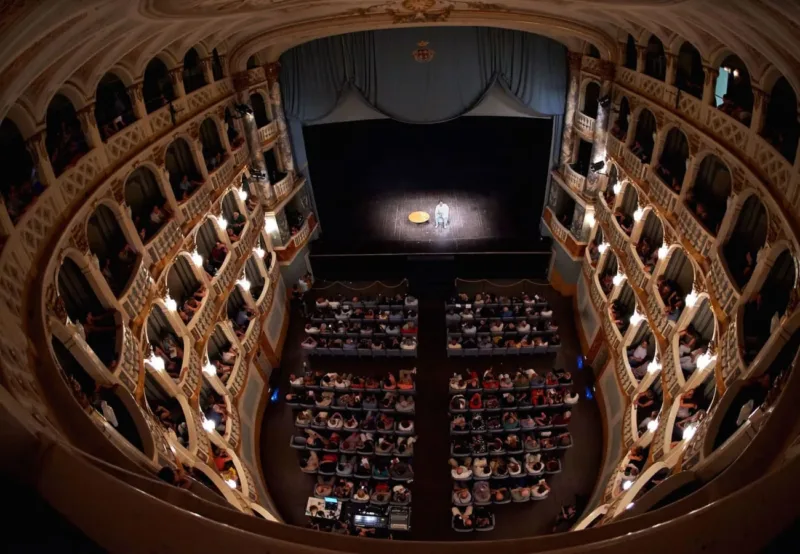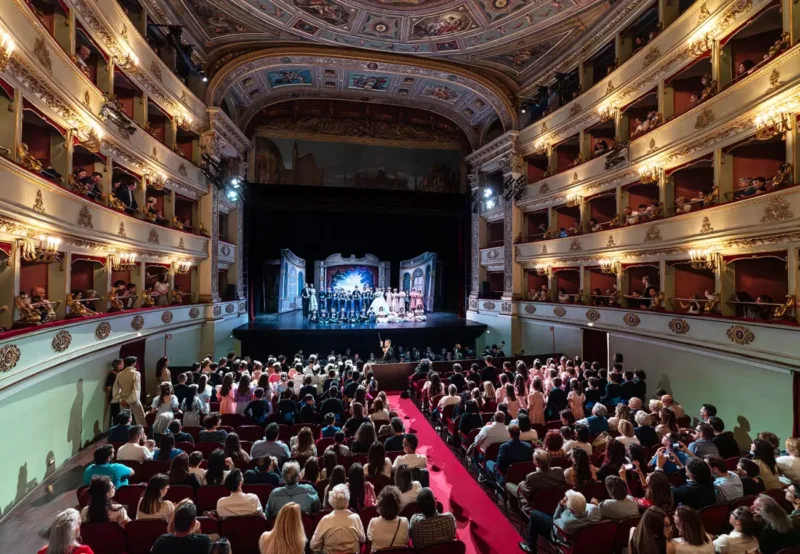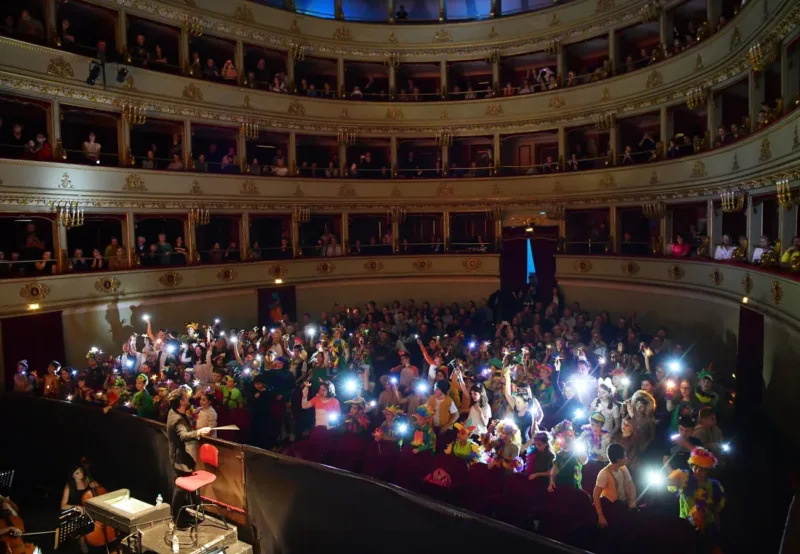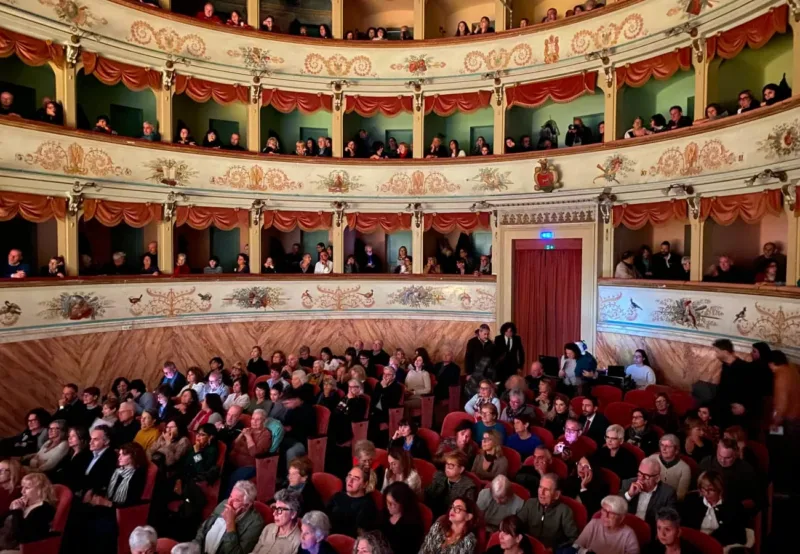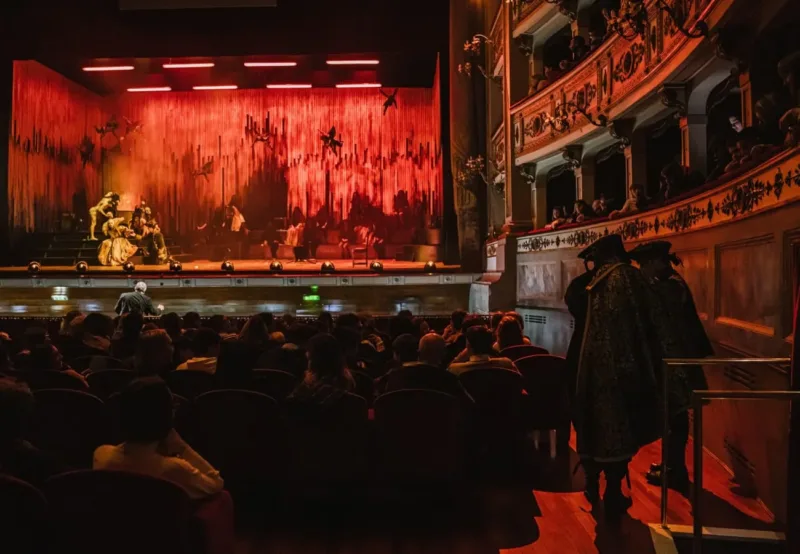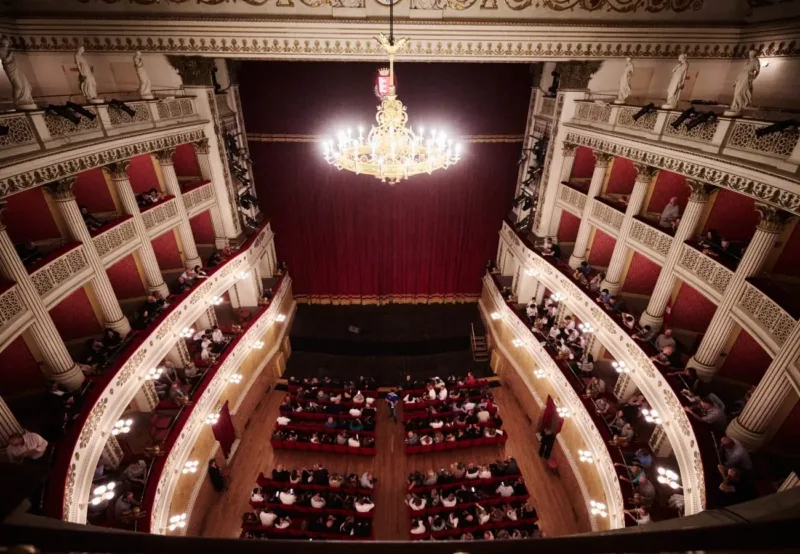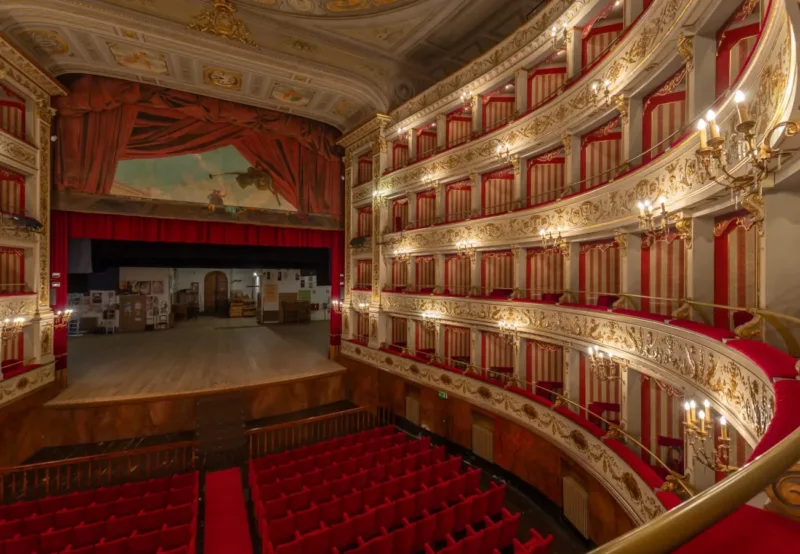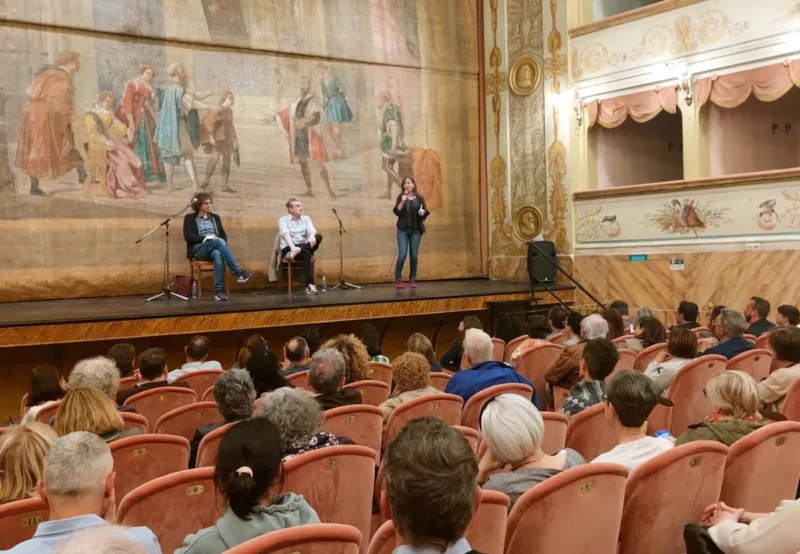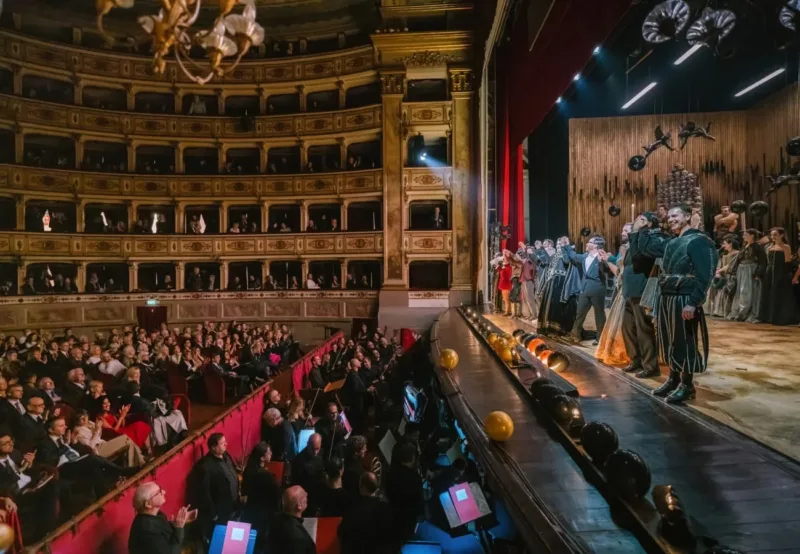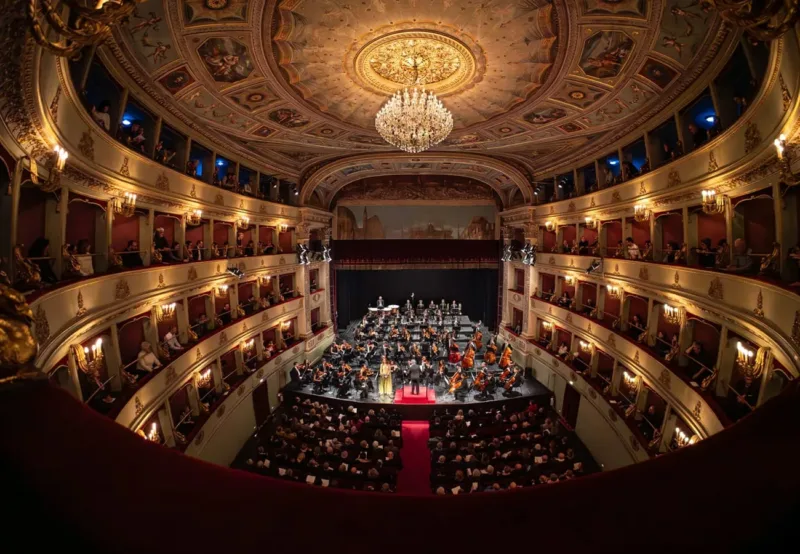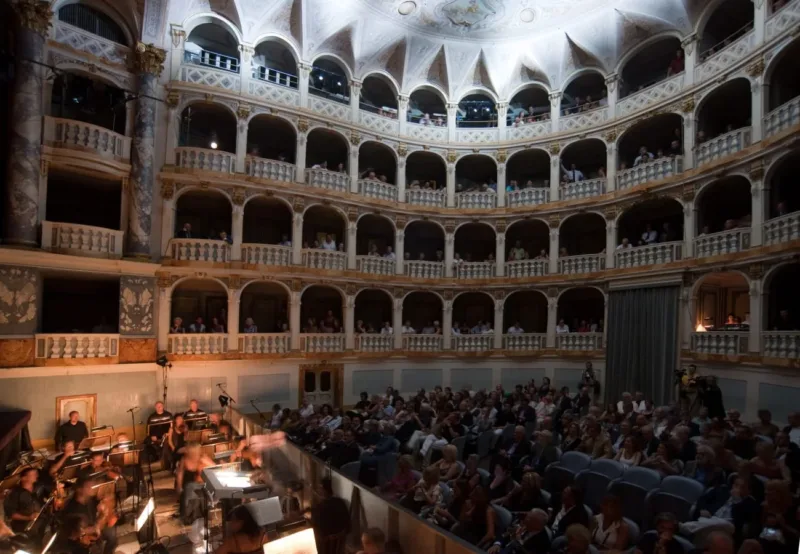Outstanding
Universal Value
The nominated property consists of a series of 18 components associated with 18 historic theatres located in central Italy.
The area aligns historically with the territory that came under the State of the Church in the 18th and 19th centuries, the period in which the theatres were constructed.
“The system of Italian-style condominio theatres of the 18th and 19th centuries in central Italy”, showcases how theatre – both as an architectural complex and as a cultural tradition – developed into a self-representative expression of a community.
The theatres are defined as condominio theatres because they were sponsored by società condominiali, which were partnerships between public institutions and groups of private individuals, usually members of the emerging bourgeoisie.
The serial property bears witness to the exceptional value of this extraordinary cultural heritage, bringing together the most representative condominio theatres, whose high density and quality are characteristic in central Italy.
The nominated property illustrates exceptionally how social changes were translated in the structure of these theatres, with their tiered-box auditoriums where all social classes could attend the same performances.
Taken together, the series delineates the evolution of the tiered-box auditorium, whose impact on the history of theatre architecture has resounded throughout the world for centuries.
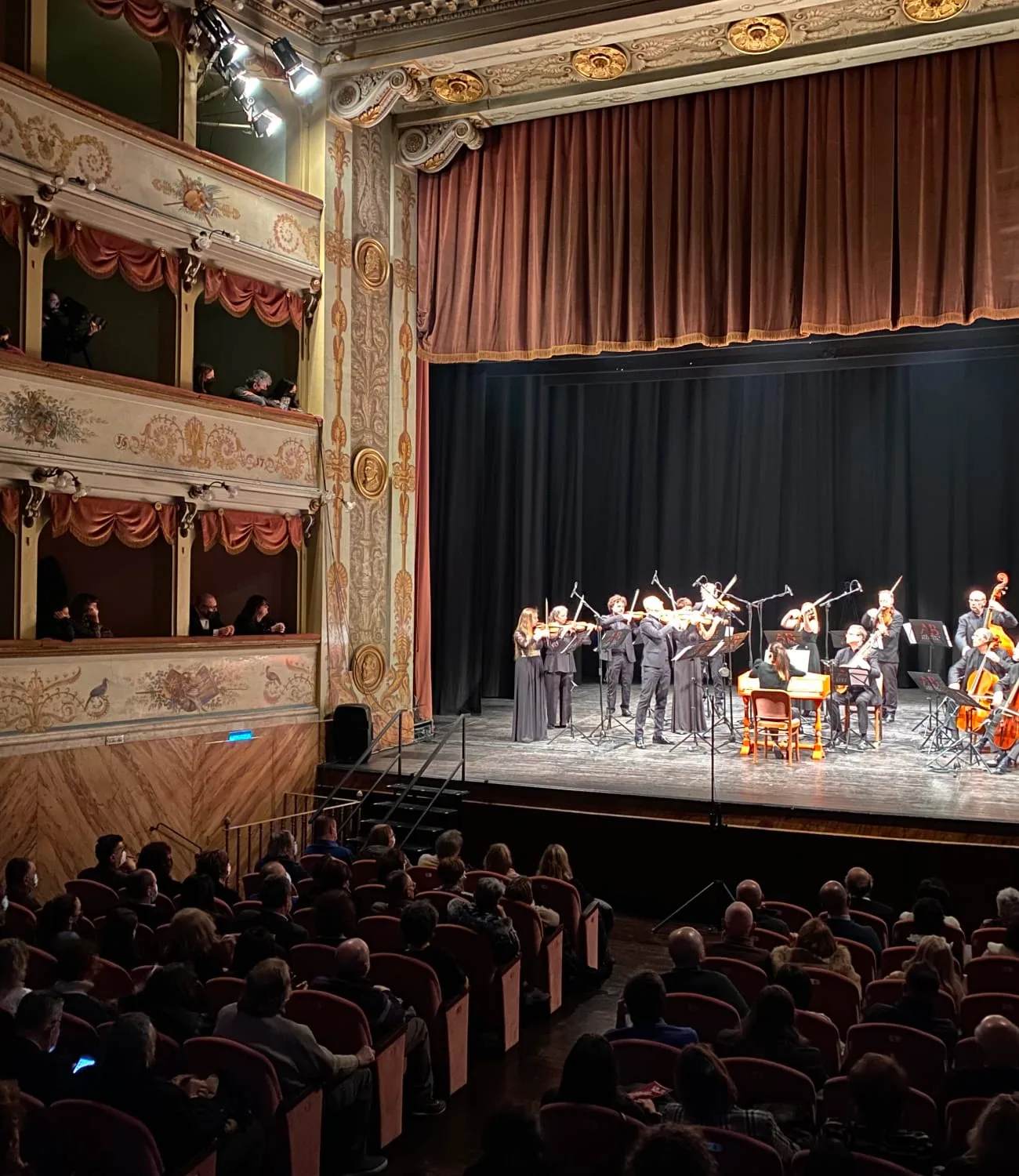
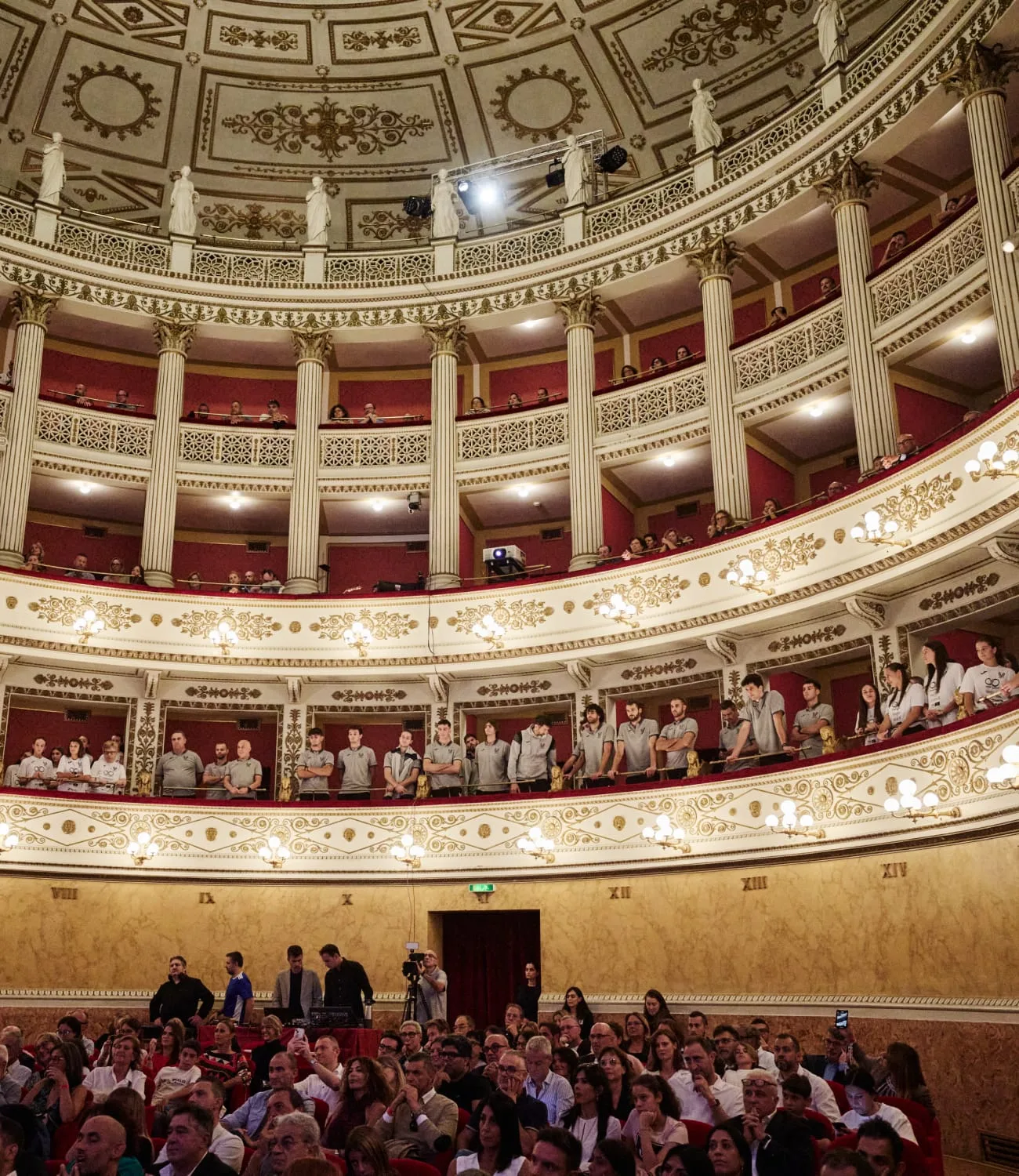
The serial nominated property exemplifies the diverse range of solutions adopted, particularly as regards the formal, technical, construction, scenographic, and acoustic features that have been preserved over time in central Italy.
It highlights, within a relatively small geographical area, the most representative examples of the diverse construction and design solutions that emerged around the concept of the Italian-style auditorium.
This variety of forms and structures is also the outcome of the exchange of ideas and experiences that took place among the foremost architects, artists and artisans who worked in what was essentially an experimental workshop for the Italian-style theatre.
They proposed new floor plans, roofs and ceilings, and they changed the relationship between the auditorium and the building in which it was located, as well as with the surrounding urban space, although their designs consistently featured tiers of boxes.
The selection is a paradigm of all the essential features of the Italian-style condominio theatre and each component illustrates a stage in the evolution of the phenomenon.
The property is nominated under criteria (iii) and (iv) of the Operational Guidelines for the Implementation of the World Heritage Convention.
(iii) The nominated property bears an exceptional and tangible testimony to the cultural tradition of condominio theatres that has been maintained in central Italy. Here, the theatre functions not only as a venue for performances but also as an institution in its own right, an educational resource and a space for social, political, and cultural interaction within the community. The serial property illustrates a turning point in the cultural tradition of theatre history. The period spanning the 18th and 19th centuries was a time of transition for the theatre, from the confines of religious institutions and the stately residences of the aristocracy, to becoming a civic institution accessible to a broader audience. The nominated property illustrates exceptionally how these social changes are translated in the structure of these theatres, allowing all social classes to attend the same performance.Between the mid-18th and the mid-19th centuries, central Italy saw the emergence of società condominiali. These joint ventures funded the construction of theatres that benefitted the entire community: the property is the best representation of the innovative concept of auditoriums open to paying audiences.
In addition to the boxes, theatres had stalls and gallery spaces designed for spectators buying tickets to individual performances. Boxes were not only meant for viewing the stage, but were designed so that people could also observe each another: to see and be seen, to put on a performance, not only in the form of a spectacle, but also as a representation of society as a whole. Even small and very small theatres have such areas as the foyer, the grand staircase, and the ridotto, the room designated for conversation and gambling. In this context, the selected components clearly demonstrate that, as an institution, the theatre has been and is today a central part of the community’s public life. The nominated site is a remarkable example of a new focus that emerged in the 18th and 19th centuries, in which the theatre became an essential component of any urban centre and a prerequisite for its definition as a town or city.
The serial nominated property includes as a whole the essential elements to express the proposed Outstanding Universal Value.The series provides a chronological overview of the rise of the Italian-style auditorium that covers the key stages of its development, and includes theatres with: U-shaped, bell-shaped, elliptical, ovoidal, and horseshoe-shaped seating areas, with multiple tiers of boxes of varying sizes, and seating capacities ranging from about 800 spectators in the larger theatres to fewer than 100 spectators in the smaller theatres. In terms of functional integrity, the series brings together the most compelling representation of the spaces that define the Italian-style condominio theatre:
- entrance area on the ground floor, ridotto room;
- auditorium with stalls and boxes;
- stage and stage machinery.
The nominated serial property includes an adequate number of components to represent the phenomenon in the area that historically corresponded to the Papal States between the 18th and 19th centuries. Each component part also includes, in addition to the theatre buildings themselves, urban features that form visual or functional connections with the theatres.The selected theatres still play a vital role as “community parlours” where cultural and social interaction takes place. The component parts of the serial nomination are well preserved.
Numerous written and visual sources are able to confirm the authenticity of the nominated theatres, providing invaluable information for understanding their history and development.Archival documents, including original plans and subsequent restoration designs, are preserved by local conservation institutions, such as libraries, and state, municipal, and private archives.
One important document that attests to the authenticity of these theatres is their original articles of association.
The theatres continue to be used as venues for theatrical and musical performances and their distinctive structural and decorative features remain largely unchanged.The authenticity of the historical urban setting of the condominio theatres is well documented through various historical maps.
The authenticity of the nominated theatres is also expressed through the important social role they still play in their communities.
Although many of these theatres are located in towns with only a few thousand inhabitants, they are regularly used for live performances and for hosting public events and gatherings, maintaining the social function for which they were originally built.
Protection
All the components of the nominated property are protected at national level by the highest measures provided for by Italian regulations.
In light of the provisions of Legislative Decree 42/2004 (Cultural Heritage and Landscape Code), each theatre falls under the restrictions and protection measures of the Italian state and is subject to control, monitoring and supervision by the Ministry of Culture.
Officers from these organisations oversee the extraordinary maintenance and restoration of the properties.
Any intervention requires prior authorisation and is subject to careful monitoring required at all stages of the work and until final certification, to ensure that all procedures have been followed and completed in accordance with the historical value of the building.
In addition to national protection measures, there are regional and municipal protection levels for the areas included in the nominated property and its buffer zones.
At those levels, protection is provided within the framework of general urban plans and landscape plans.
Management
The nominated theatres are publicly owned and belong to their respective municipalities in Emilia- Romagna, Marche and Umbria, with the exception of the Teatro Sociale in Amelia which is owned by the state property office.
In light of this, the main responsibility for the management of municipal theatres lies with the municipality.
Specifically, the Public Buildings department is responsible for the basic technical services, reception, surveillance, security, and routine maintenance of the theatre building, while the Culture department oversees the management of the cultural programme, opera and drama seasons.
In some cases, the municipality outsources the planning and management of the theatre and its events under special agreements with third-party organisations, among which are foundations, cultural associations and multidisciplinary entities (e.g. AMAT – Associazione Marchigiana Attività Teatrali, and Teatro Stabile dell’Umbria, recognised by the Ministry of Culture) with decades of experience across their regions. They provide a solid foundation for managing activities that ensure the nominated theatres remain active and fully utilised.
A Memorandum of Understanding is being developed for the implementation of the Management Plan.
This agreement involves the institutional actors that have promoted and have taken part in the nomination process.
These are: the municipalities that own the theatres, the regional authorities of Emilia-Romagna, Marche, and Umbria, and the central and territorial offices of the Ministry of Culture.
The memorandum states that the signatories agree to cooperate during the nomination phase and to work together as outlined in the Management Plan of the World Heritage Site.

